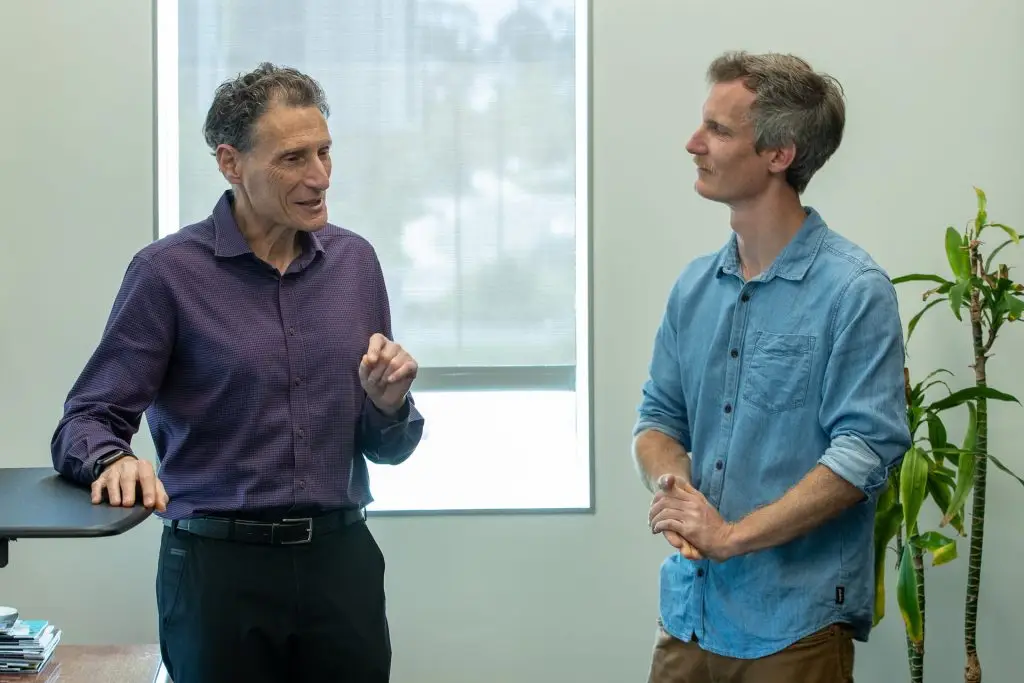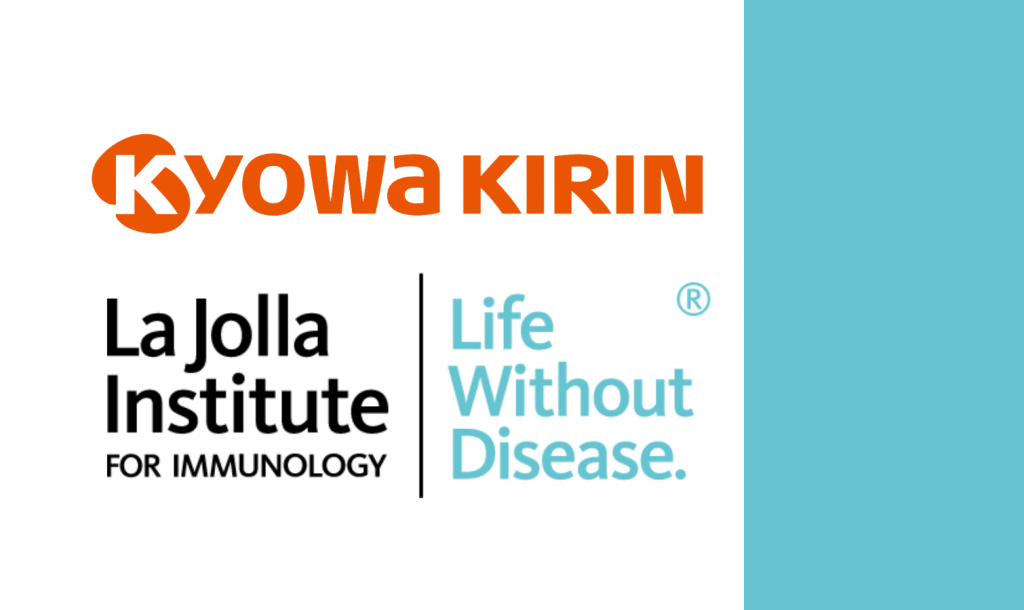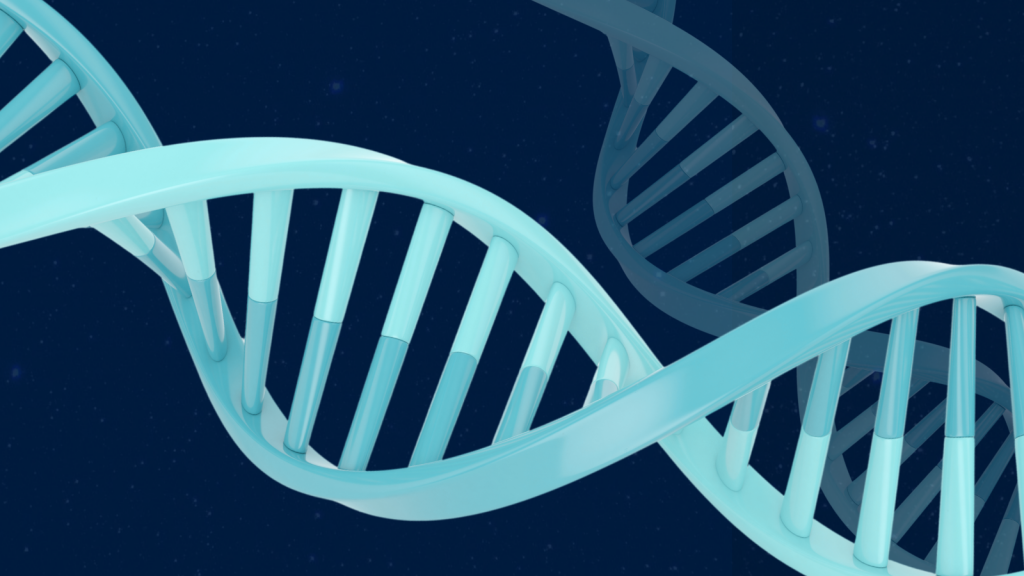LA JOLLA, CA—A population of unconventional white blood cells has recently captured the attention of immunologists and clinicians alike. Unlike conventional T cells, which circulate throughout the body in our blood, mucosal-associated invariant T (MAIT) cells are largely found in tissues where they provide immune protection against a broad range of diseases.
MAIT cells are highly abundant in humans. Although they make up only 2 percent of the lymphocytes in blood, MAIT cells account for 10 to 40 percent of lymphocytes in the liver, and they are common in tissues such as lungs. Still, much about MAIT cell biology and clinical function remains unknown.
In a new study, published in Nature Cell Biology, scientists at La Jolla Institute for Immunology (LJI) explored the location, function, gene expression, and metabolism of MAIT cells in the mouse lung.
“Metabolism is the way your cells use fuel molecules to do their work,” says LJI Instructor Thomas Riffelmacher, Ph.D., first author of the study. “There’s been a recent revolution in the field in which studies are starting to link the function of T cells to their metabolic programming, but this had not yet been explored in MAIT cells.”

To pioneer this line of research, Riffelmacher teamed up with LJI Professor and Chief Scientific Officer Mitchell Kronenberg, Ph.D., an expert on innate-like T cells that make more rapid responses. Their latest work characterizes these properties in MAIT cells and how they contribute to the population’s ability to fight off pathogens.
The efforts revealed two distinct “flavors” of MAIT cells: an antiviral subtype fueled by sugar and an antibacterial subtype fueled by fat. The findings may now inspire novel vaccines and cell therapies that shift the balance between these two cell groups to help individuals fight specific pathogens.
A tale of two cell types
MAIT cells exhibit enhanced memory-like responses after some infections, with higher cell numbers and stronger protective responses boosting the host’s defenses long after the pathogen has left the body. Riffelmacher initially set out to explore what molecular changes drove this important memory function in MAIT cells.
To do this, he delivered a live bacterial vaccine strain to a mouse model, and within days, MAIT cells had expanded 100-fold in the animals’ lungs. What Riffelmacher didn’t expect to see was the emergence of two different groups of cells within this expanded population. Through a comprehensive set of experiments to characterize these two cell lineages, several distinct properties became clear.
One subtype of MAIT cells, predominantly located along blood vessels in the lung, produced a type 1 immune response defined by the secretion of a cytokine called interferon-gamma (IFN-ɣ). These lymphocytes, called MAIT1 cells, were specialized to fight intracellular microbes, namely viruses like influenza.
The other subtype of MAIT cells, predominantly found in lung tissue, produced a type 17 immune response defined by the secretion of a different cytokine, interleukin-17 (IL-17). MAIT17s were specialized to fight extracellular microbes, namely bacteria like those that lead to pneumonia.
To further demonstrate their distinct protective properties, the researchers purified MAIT1 and MAIT17 cells and transferred them into new mice. Both populations enhanced the animals’ immunity compared with untreated mice. However, MAIT1s provided better protection against the influenza virus, while MAIT17s protected against the bacteria Streptococcus pneumoniae, the most common cause of pneumonia.
Still more striking than their functional differences were their highly divergent metabolic programs. Each cell type appeared to get its energy from a different source.
“I remember seeing this first batch of data and thinking, ‘Wow, this is a huge difference—we need to look into this,’” says Riffelmacher, who also serves as the LJI Immunometabolism Core Director.
MAIT1s remained in a very low-energy, dormant state until activated, at which point they relied on sugar (glycolysis) to get their fuel. MAIT17s, on the other hand, were highly active and required constant consumption of fatty acids to generate enough energy through their mitochondria. When the researchers genetically manipulated white blood cell metabolism to favor glycolysis, MAIT1 cell numbers were elevated, confirming that metabolism influenced the MAIT cell response.
What’s the (clinical) use?
Does this mean eating fatty foods could protect you against pneumonia? Kronenberg says diet can have some influence on the distribution of metabolites in the body, but metabolism functions differently at the cellular and organismal levels, so there’s no proof that changing one’s eating patterns would influence MAIT cell function.
Still, by tweaking the levels of these metabolites pharmacologically, the researchers were actually able to shift the animals’ MAIT cell response likely to be better at fighting either a viral infection or bacteria.
To do this clinically in humans, the researchers suggest developing vaccines to activate either MAIT1 or MAIT17 cells, or even transplanting one cell subtype into patients to boost a particular immune response. Because MAIT cells and the main signaling protein they interact with are so highly conserved across individuals and species, they are also much less likely to trigger a graft-versus-host response than other types of white blood cells.
“Our hope is that in the future, we’ll have tools to selectively enhance MAIT1s or MAIT17s so that patients can have their immune systems tuned against different pathogens as necessary,” says Kronenberg.
Additional authors of the study, “Divergent metabolic programs control two populations of MAIT cells that protect the lung,” include Mallory Paynich Murray, Chantal Wientjens, Shilpi Chandra, Viankail C. Castelan, Ting-Fang Chou, Sara McArdle, Christopher Dillingham, Jordan Devereaux, Aaron Nilsen, Simon Brunel, David Lewinsohn, Jeff Hasty, Gregory Seumois, Christopher Benedict, and Pandurangan Vijayanand.
This research was supported by the National Institutes of Health (NIH; grants AI71922, AI137230), and the Wellcome Trust (grant 210842_Z_18_Z).
DOI:10.1038/s41556-023-01152-6
###




